Try GOLD - Free
3D-Printed-Food
Popular Mechanics
|December/January 2017
We’ve 3D-printed plastic, metals, and wood fiber. And now that same technology is being used to make chocolates and pizza. Unlike with most other food, how printed meals taste isn’t the real point. It’s what they can do.

Hod Lipson’s laboratory at Columbia University is a place designed to nurture the human instinct to tinker. The space itself is pretty basic: linoleum floor, white walls, natural wood tables. Wires, markers, textbooks, and glue bottles cover most surfaces—the detritus of students designing, making, refining, and tweaking. Robotic models line the shelves: a robot with foot-long plastic wings that look like a housefly’s, miniature machines with exposed silver gears, geometric robotic skeletons. There are laser cutters and microscopes and welding masks hung on hooks. Pushed up against a wall, a robotic arm bears a paper sign: “DANGER. Robot moves without warning. KEEP AWAY.”
Lipson became a professor of mechanical engineering at Columbia in 2015, after fourteen years as a professor at Cornell University. He is a pioneer in the field of three-dimensional printing, and one of the first to experiment with substituting the usual raw materials—plastics, metals—with edible food products. It was in Lipson’s lab about ten years ago that a few of his students had the idea to mess around with it. Somebody tried filling a printer syringe with frosting. Then cheese, chocolate, and other foods. “In the beginning we thought it was frivolous,” Lipson says. “We’d say ‘Look, we printed with chocolate, but let’s get serious and do our battery work.’”
But when writers at The New York Times and the BBC started inquiring about the technology, Lipson saw public interest that he hadn’t anticipated. People who “couldn’t care less about batteries or robotics” suddenly cared about 3D printing when food got involved, he says. Everybody cares about food. A new branch of 3D printing began.
This story is from the December/January 2017 edition of Popular Mechanics.
Subscribe to Magzter GOLD to access thousands of curated premium stories, and 10,000+ magazines and newspapers.
Already a subscriber? Sign In
MORE STORIES FROM Popular Mechanics

Popular Mechanics US
The Tomb of Jesus Christ
AT THE PLACE WHERE Jesus was crucified, there was a garden, and in the garden a new tomb, in which no one had ever been laid.\"-John 19:41.
2 mins
September/October 2025

Popular Mechanics US
Actual Random Numbers
A LARGE TEAM OF SCIENTISTS CLAIMS to have achieved “certified randomness” using a quantum computer.
3 mins
September/October 2025
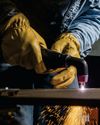
Popular Mechanics US
STURDY STEEL WIENER DOG BOOT SCRAPER
A recent North Atlantic mud season became the inspiration for this weekend metalsmithing project.
3 mins
September/October 2025
Popular Mechanics US
An Ancient Scarab Amulet
CHILDREN ARE ALWAYS picking stuff up off the ground—usually junk. But sometimes, they can find real treasure.
2 mins
September/October 2025
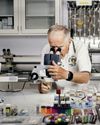
Popular Mechanics US
Inside the Glitter LAB
How the tiniest trace of red shimmer helped solve one of California's most brutal crimes.
15 mins
September/October 2025
Popular Mechanics US
THE POWER OF EARTH'S ROTATION
AS CLIMATE CHANGE CONTINUES TO impact countries and communities around the world, humanity is hungry for alternative sources of green energy.
1 mins
September/October 2025
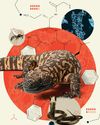
Popular Mechanics US
The SECRET VENOMOUS HISTORY of Ozempic
How a deadly toxin from a desert dwelling lizard led to one of the biggest medical breakthroughs in modern times.
15 mins
September/October 2025
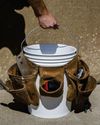
Popular Mechanics US
ONE BUCKET. TEN GENIUS HACKS.
THERE'S A $5 DO-IT-ALL PROBLEM SOLVER JUST SITTING IN YOUR GARAGE. PUT IT TO WORK!
4 mins
September/October 2025

Popular Mechanics US
Lucid Dreaming
THE STATE KNOWN AS LUCID DREAMING IS an unquestionably surreal one, and it just got even more so. A team of researchers at Radboud University Medical Center in the Netherlands has discovered that lucid dreaming is a state of consciousness separate from both wakefulness and REM sleep (the state usually associated with dreams). In fact, it is associated with its own type of brain activity.
1 mins
September/October 2025
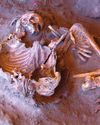
Popular Mechanics US
The Ancient People of the Sahara
BETWEEN 14,800 AND 5,500 YEARS AGO, the Sahara—known for being one of the driest places on Earth—actually had enough water to support a way of life. Back then, it was a savanna that early human populations settled to take advantage of the favorable farming conditions. Among them was a mysterious people who lived in what is now southwestern Libya and should have been genetically subSaharan—except, upon a modern analysis, their genes didn’t reflect that.
1 mins
September/October 2025
Translate
Change font size
